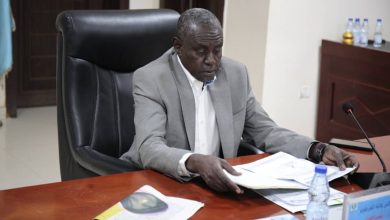The Nile.. The Struggle for Wealth and Influence (1-2)

By Sarri Nugd
While battles rage across more than ten Sudanese states and floods ravage the remaining safe states with the wrath of nature, Ethiopia dances elsewhere to the rhythms of its rainfall, filling the Grand Ethiopian Renaissance Dam (GERD) reservoir with over 60 billion cubic meters of water. This coincided with a political earthquake in South Sudan’s parliament, where, on July 8th, its members unanimously ratified their government’s endorsement of the Nile Basin Cooperative Framework Agreement, known in the media as the “Entebbe Agreement.” The aftershocks of Juba’s parliamentary decision reached Egypt, which is deeply entrenched in economic crises and looking for ways to free itself from the crushing interest of World Bank loans that have hindered its development and leadership in managing its African affairs.
Water Allocation:
The Entebbe Agreement, set to take effect on September 6, marks a significant hydro-political shift in the Nile Basin region. It represents a serious blow to both Sudan and Egypt. The agreement calls for a reconsideration of the allocation of Nile waters to ensure the interests of all parties and removes the “veto” power that Sudan and Egypt have enjoyed, which allowed them to object to any projects proposed by upstream Nile Basin countries. This agreement will end the historical privilege Sudan and Egypt have held in managing Nile waters, and will also impact their annual water shares. The Nile stretches 6,650 kilometers, fed by the Blue and White Nile tributaries, providing Sudan and Egypt with an annual flow of 84 billion cubic meters. Under historical agreements, Sudan receives 18.5 billion cubic meters, while Egypt enjoys over 55.5 billion cubic meters. However, about 10 billion cubic meters evaporate annually from Lake Nubia/Nasser (the reservoir of the High Dam). The other Nile Basin countries (Ethiopia, Rwanda, Tanzania, Uganda, Burundi, South Sudan, Kenya, the Democratic Republic of Congo, and Eritrea) contest these historical allocations, arguing that the agreements were made during colonial times and are not binding. Six of these countries have already ratified the Entebbe Agreement.
**Population Figures:**
– Sudan: 48 million
– Egypt: 112 million
– Ethiopia: 126 million
– Eritrea: 3.8 million
– Uganda: 48 million
– Kenya: 55 million
– Tanzania: 67 million
– Rwanda: 14 million
– South Sudan: 11 million
– DRC: 102 million
– Burundi: 13 million
High Rainfall Rates:
Sudan and Egypt, in their quest to preserve their historical gains, argue that the current allocation of Nile waters is fair. They claim that the other Nile Basin countries lie in tropical regions with high rainfall, vast lakes, abundant water resources, and rich savanna lands, unlike Sudan and Egypt, which are located in arid tropical regions where deserts dominate. Climate change has exacerbated droughts and expanded desert areas, shrinking agricultural lands, leading to livestock deaths, and reducing the average per capita share of fresh water. All of this compels Sudan and Egypt to cling to their water entitlements to ensure their water and national security.
The struggle over water resources has never been limited to domestic water use, as might be initially assumed. Instead, water has always been sought primarily to ensure food security. About 80% of the world’s freshwater is used for agriculture, with large amounts of water needed for crop production. In light of global food security challenges, due to climate change-induced droughts, floods, and erratic rainfall, many agricultural seasons fail around the world. This has driven a shift away from traditional rain-fed agriculture toward developing irrigation mechanisms. Additionally, many major food-producing countries are now reconsidering their export policies to preserve their water resources and distance themselves from “virtual water” trade, where water is embedded in goods.
**Water Consumption for Crop Production (per 1 kg):**
– Rice: 4,000 liters
– Wheat: 1,500 liters
– Corn: 480 liters
– Cotton: 10,000 liters
**Main Commodities (per 1 kg):**
– Chocolate: 17,196 liters
– Lamb: 10,412 liters
– Chicken: 4,325 liters
– Sugar: 2,515 liters
– Banana: 790 liters
– Tomato: 214 liters
**Water Consumption for Products (per 1 kg):**
– Jeans (cotton growing and textile production): 8,000 liters
– Burger: 2,400 liters
– One cup of milk: 200 liters
– Coffee for one cup: 140 liters
– Tea for one cup: 27 liters
The concept of virtual water played a key role in the British colonial agreements that secured Sudan and Egypt the lion’s share of Nile waters. Egyptian cotton was a major source for Britain’s textile industry, which in turn sparked the industrial revolution in Europe and symbolized the wealth of the nobility. Given that cotton requires vast amounts of virtual water (10,000 liters to produce one kilogram of cotton), it was necessary for the British to ensure Egypt received guaranteed water shares from the Nile to support the British industry and way of life. The fertile lands of Sudan’s Gezira also attracted the British, leading them to build the Sennar Dam in 1925 and later sign the 1929 Agreement, securing Sudan’s share of water for cotton cultivation in the Gezira Scheme, the first form of virtual water trade in Sudan.
Water Projects:
It’s worth noting that the White Nile waters, originating from Lake Victoria, represent only a small portion of the Nile’s total water, contributing just 14%. The Blue Nile and its tributaries, however, provide approximately 86% of the Nile’s total water. This means that water projects in South Sudan and other upstream tropical countries won’t significantly impact the water flowing to Sudan and Egypt, as developing such projects is not easy due to the vast swamps and environmental challenges in those areas. The primary aim of the Entebbe Agreement seems to be the reallocation of the Blue Nile waters, which originate in Ethiopia. Here, Addis Ababa plays a tactical role in the conflict. While Ethiopia has long argued that the GERD won’t impact Nile water allocations—since it is meant to generate hydroelectric power, not for agriculture—Ethiopia has built regional alliances. It is partnering with Nile Basin countries by supplying electricity from the GERD in exchange for their support of the Entebbe Agreement. Ethiopia, alongside its regional allies, aims to build more dams for irrigation and agriculture, directly challenging Sudan and Egypt’s water shares.



